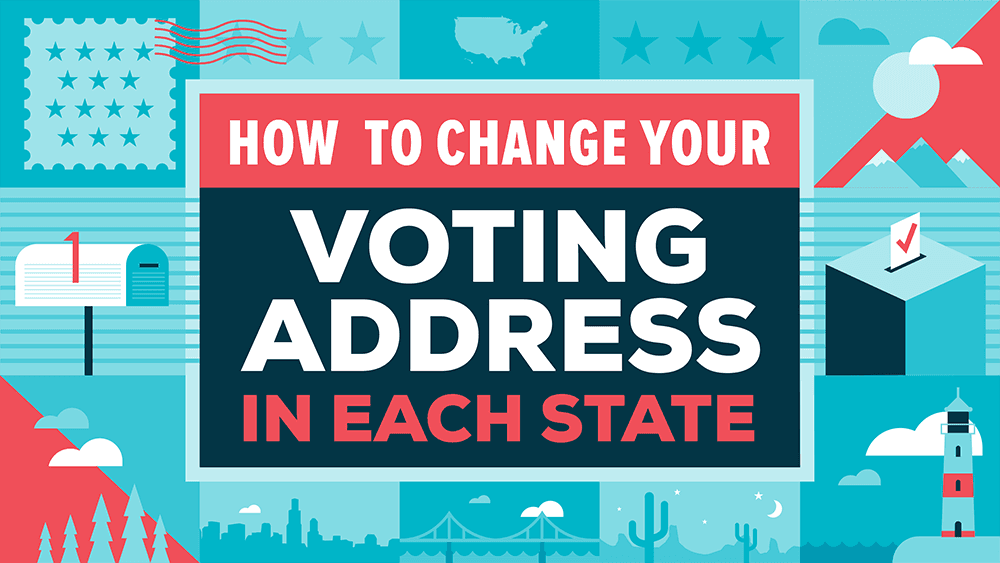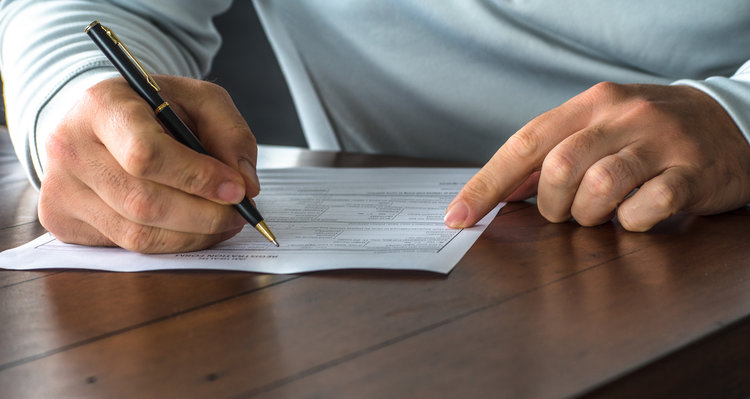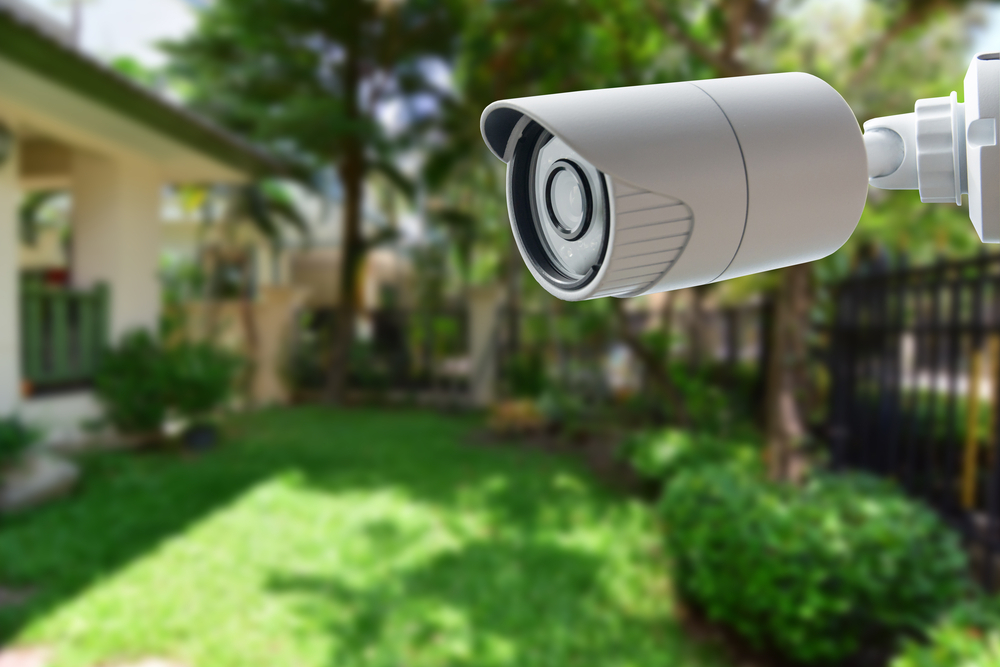How to Change Your Voting Address in Each State

Moving soon? Get organized with our free moving checklist.
If you’ve voted before, you know that updating your mailing address also means changing your voting address. This is because your voter registration information is tied to your residential address. Therefore, if moving to a new home is in your future, you’ll need to update your registration records with your new address before voting.
Unfortunately, changing your address at the Department of Motor Vehicles (DMV) or filling out an Official USPS Change of Address Form will not automatically update your voter registration information. There are some additional steps to change your voting address. The one small problem? When it comes to updating voter registration information, things are, well… complicated. Policies and procedures vary by state, so use this guide for information and to get it all handled.
Why should you update your voting address?
Before we discuss how to change your voting address, it’s important to know why exactly you need to change it.
The biggest reason why you should update your voter address when moving is that every state government tracks all voters based on where they live. As the election time approaches, this information is used to organize voters into precincts and districts based on their location. This is why you have to vote at an allotted polling station in your vicinity.
If you do not update your address, or if it is in a different state, you will not be categorized in a precinct or district. Your name will not appear on the voting roll at your nearest polling station. As a result, you may have to cast a provisional ballot that ensures individuals are not barred from the voting process if they do not appear on the precinct’s roster because of minor errors such as a change in address or name.
Every state handles provisional ballots differently. However, one thing is common: provisional ballots are kept separate from the ballot count until after the election when their legitimacy can be examined.
Therefore, it’s important to update your voter address as soon as you move to avoid having to cast a provisional ballot. Remember, it’s better to be safe than sorry!
Basic voting regulations
Haven’t voted before? Here’s a quick overview of the most basic elements of voting. As we mentioned, each state has its own rules, regulations, and timelines. In general, however, these statements are consistent throughout most states:
- Unless you live in North Dakota, eligible voters are required to register to vote prior to an election. These states also have registration deadlines that can be up to 30 days before the election. Check the US Vote Foundation to find your state’s deadline for registration. You can also check your state or territory’s election office for more information.
- In most states, you must be at least 18 years old on or before the next Election Day to register. If you are 16 or 17, you may be able to pre-register to vote, depending on your state. Be sure to check your state’s voter registration age requirements well in advance of Election Day.
- Every state offers absentee ballots, which is a vote cast by someone unable to visit the official polling place to which the voter is usually assigned.
- In most states, you must vote at your designated polling station. Its location is dependent upon your voting address, so it’s important to keep this up-to-date whenever you move.
While voting is important, bear in mind that nobody is obligated by US laws to vote in any local, state, or presidential election. As per the US Constitution, voting is a right. Several constitutional amendments have been sanctioned since the first election. However, none of them made voting compulsory for US citizens.
When to change your voting address
We understand that moving is complicated and with everything on your moving checklist, you may forget to change your voting address. The process takes time to complete, so if you want to vote, plan accordingly. Whatever you do, don’t wait until the day before the election to register, or it’ll be too late.
Most states have a voter registration deadline ranging from 2-4 weeks prior to an election. To be safe, remember to check your state’s deadline shortly after you move, or at least 8 weeks before the election.
You should also verify your registration status a week before this voter registration deadline in case you need to make any alterations such as filling out a new registration form, changing your voting address, or correcting your form. You don’t want to show up to the polls unable to vote because you forgot to register or update your address.

Where to change your voting address
Some states allow you to update your voter registration, change your voting address, or register to vote online. Other states, however, require that you update your voter registration information or register to vote by mail or in person. You can change your voting address in person at state or local voter registration and/or election offices, the DMV, armed services recruitment centers, and state or county public assistance offices.
What happens when you change your voting address
When you register to vote in a new location, election officials will typically ask where you were last registered to vote. Your new election office will then send a cancellation form to your previous elections office, as your voter registration record should always reflect your current residence.
What you need to change your voting address
Like most of the requirements for changing your voting address, the documents you need on hand also vary by state. As a general rule, however, you’ll need to prove your identity, age, and your new address. Plan to have your updated driver’s license, government-issued ID card, and/or social security number handy when you update your voter registration information. You may also need a document like a rental agreement or utility bill.
Not all states require these forms of identification, so be sure to check your state’s requirements before attempting to change your voting address.

How long changing your voting address takes
If you have recently registered to vote in another state, you should periodically check back to ensure it is approved. It can take several weeks for elected officials to process your voter registration form.
Most states send out voter registration cards confirming your voter information and registration status within 5-7 weeks after receiving your registration information.
Don’t know whether you’re registered to vote under your previous address? You may be able to verify your registration status online.
Voter registration in multiple states
Wondering if you can register to vote in multiple states? Well, the laws around vote registration in more than one state are a little unclear. From a federal perspective, it is not illegal to register in two different states. This usually occurs when somebody moves without notifying their past state.
States regularly clean their electoral rolls, and when this happens, your name will be removed from the previous state. However, even after finding name duplication, the states have to verify that this is the same individual in two states, instead of two individuals sharing a name. Election officials will not take somebody off the registered voter list in their state until they’re sure this individual has shifted.
While being registered in multiple states is legal, double voting is totally illegal. It is a criminal offense to vote more than once in the same election.
Voter registration after moving out of the country
As an American citizen who is traveling or living abroad, you are still eligible to vote in US elections. However, you have to request an absentee ballot and you will receive it by email, fax, or internet download, depending on the state you are eligible to vote in. You will have to fill it out at your home and mail it back to a selected polling place in the US.
In some states, such as Alaska, California, and New Jersey, even US citizens who are above 18 years and were born abroad but have never lived in the US are eligible to vote absentee.
Puerto Rican citizens who have moved from the US mainland to the island are no longer eligible to vote in mainland elections. The same rule applies to residents of Guam, the US Virgin Islands, Northern Mariana Islands, American Samoa, and the US Minor Outlying Islands.
State-by-state requirements
If you have moved within your state, you need to update your voter registration with your new address. Make sure you also update your state driver’s license or state ID card before the election, if that’s the voter ID you’ll use. And if you’ve moved permanently to another state, you need to register to vote in the new state.
Now that you have a general idea of how to change your voting address, use this link to find your state’s specific requirements.
Thanks to this guide and the links above, you have all of the information you need to change your voting address and update your registration information in plenty of time for the next election. Happy voting!













